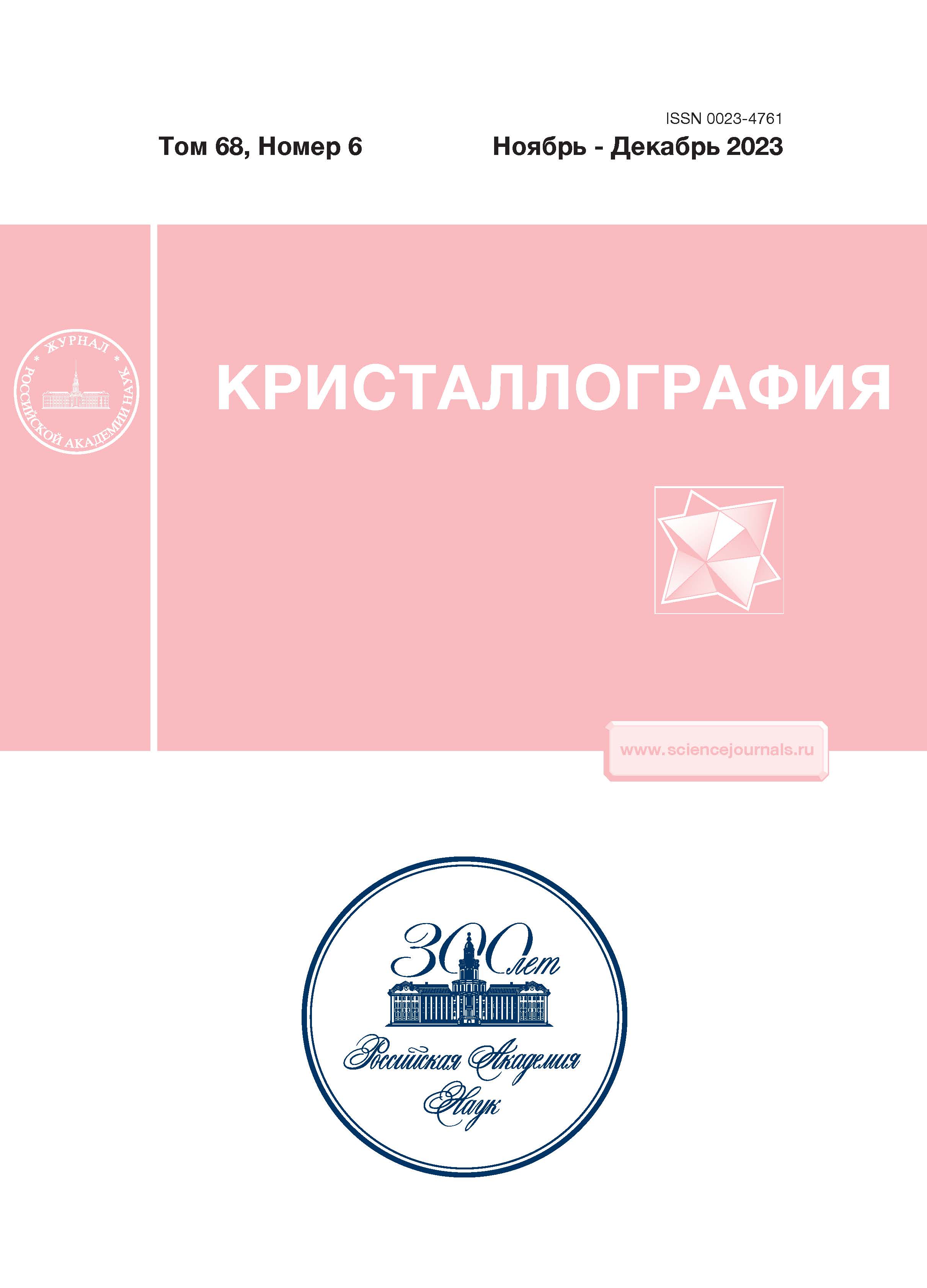Determination of the Shape of a Helix Particle Based on Small-Angle X-ray Scattering Data: Modification of the “Simulated Annealing” Algorithm
- Authors: Grigorev V.A.1, Konarev P.V.1,2, Volkov V.V.1,3
-
Affiliations:
- Shubnikov Institute of Crystallography, Federal Scientific Research Centre “Crystallography and Photonics,” Russian Academy of Sciences, 119333, Moscow, Russia
- National Research Centre “Kurchatov Institute”, 123182, Moscow, Russia
- National Research Centre “Kurchatov Institute,”, 123182, Moscow, Russia
- Issue: Vol 68, No 6 (2023)
- Pages: 941-945
- Section: ДИФРАКЦИЯ И РАССЕЯНИЕ ИОНИЗИРУЮЩИХ ИЗЛУЧЕНИЙ
- URL: https://ter-arkhiv.ru/0023-4761/article/view/673301
- DOI: https://doi.org/10.31857/S0023476123600295
- EDN: https://elibrary.ru/FZZKKB
- ID: 673301
Cite item
Abstract
The modified “simulated annealing” algorithm implemented in the DAMMINV software allows one to obtain 10 to 15 different nanoparticle models fitting small-angle X-ray scattering data. This method is based on the mode of intermittent weights of the objective function, which balances between minimization of the penalty coefficients, responsible for the model meaningfulness, and the discrepancy between the experimental and model scattering data. The effect of noise on the scattering curves on the quality of three-dimensional helix shape reconstruction has been investigated, and the results are compared with the data obtained using standard programs. The method has been verified on noise-free model data and data with superimposed Poisson noise by the example of a helix particle with a thickness of turns comparable to the characteristic size of the space between them. A comparative analysis of the reconstructed models and the three-dimensional shapes obtained using standard modes of the “simulated annealing” algorithm has been performed.
About the authors
V. A. Grigorev
Shubnikov Institute of Crystallography, Federal Scientific Research Centre “Crystallography and Photonics,” Russian Academy of Sciences, 119333, Moscow, Russia
Email: vasiliy.grigorev.1996@mail.ru
Россия, Москва
P. V. Konarev
Shubnikov Institute of Crystallography, Federal Scientific Research Centre “Crystallography and Photonics,” Russian Academy of Sciences, 119333, Moscow, Russia; National Research Centre “Kurchatov Institute”, 123182, Moscow, Russia
Email: peter_konarev@mail.ru
Россия, Москва; Россия, Москва
V. V. Volkov
Shubnikov Institute of Crystallography, Federal Scientific Research Centre “Crystallography and Photonics,” Russian Academy of Sciences, 119333, Moscow, Russia; National Research Centre “Kurchatov Institute,”, 123182, Moscow, Russia
Author for correspondence.
Email: vvo@crys.ras.ru
Россия, Москва; Россия, Москва
References
- Свергун Д.И., Фейгин Л.А. Рентгеновское и малоугловое рассеяние. М.: Наука, 1986. 280 с.
- Petoukhov M.V., Franke D., Shkumatov A.V. et al. // J. Appl. Cryst. 2012. V. 45. P. 342.https://doi.org/10.1107/S0021889812007662
- Kirkpatrick S., Gelatt C.D., Vecchi M.P. // Science. 1983. V. 220. P. 671.https://doi.org/10.1126/science.220.4598.671
- Svergun D.I. // Biophys J. 1999. V. 78. P. 2879.https://doi.org/10.1016/S0006-3495(99)77443-6
- Franke D., Svergun D.I. // J. Appl. Cryst. 2009. V. 42. P. 342.https://doi.org/10.1107/S0021889809000338
- Svergun D.I., Stuhrmann H.B. // Acta Cryst. A. 1991. V. 47. P. 736. https://doi.org/10.1107/S0108767391006414
- Svergun D.I., Volkov V.V., Kozin M.B. et al. // Acta Cryst. A. 1996. V. 52. P. 419. https://doi.org/10.1107/S0108767396000177
- Shannon C.E., Weaver W. The Mathematical Theory of Communication. University of Illinois Press, 1949. 125 p.
- Grant T.D. // Nature Methods. 2018. V. 15. P. 191. https://doi.org/10.1038/nmeth.4581
- He H., Liu C., Liu H. // iScience. 2020. V. 23. 100906.
- Волков В.В. // Кристаллография. 2021. Т. 66. С. 793. https://doi.org/10.31857/S0023476121050234
- Григорьев В.А., Конарев П.В., Волков В.В. // Успехи в химии и химической технологии. 2022. Т. 36. С. 53.
- Marsaglia G., Tsang W.W. // SIAM J. Sci. Stat. Comput. 1984. V. 5. P. 349. https://doi.org/10.1137/0905026
- Devroye L. // Computing. 1981. V. 26. P. 197. https://doi.org/10.1007/BF02243478
- Durbin J., Watson G.S. // Biometrika. 1950. V. 37. P. 409. https://doi.org/10.1093/biomet/37.3-4.409
- Durbin J., Watson G.S. // Biometrika. 1951. V. 38. P. 159. https://doi.org/10.2307/2332325
- Kozin M., Svergun D. // J. Appl. Cryst. 2001. V. 34. P. 33. https://doi.org/10.1107/S0021889800014126
Supplementary files














